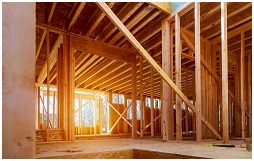
With recent Bank of Canada interest rate hikes, and more on the way, here is what you need to know about how these policy changes affect your mortgage.
First and foremost, the interest rate hikes directly affect individuals that currently have an adjustable-rate mortgage.
Depending on your mortgage amount, you’re looking at a potential mortgage payment increase of $40 per month for every $100,000 of balance owing. For example, if your mortgage balance is $400,000 then your monthly payment will increase approximately $160 per month.
As Canada’s lending prime has increased, variable rates increase as these rates are tied to prime. Payments need to increase to ensure the scheduled amortization remains the same. Hence you will still pay off your mortgage as the original amortization shows. For those individuals on a fixed-mortgage, you will not be affected by these interim changes outside of renewing your mortgage. If your mortgage is up for renewal, you will likely be renewing at a higher rate depending on your lender. If you’re still six months away from renewing, it may be a good idea to look into the options for early renewal to avoid getting caught up in another interest rate hike later this year.
All rates, fixed or variable are expected to rise more over the summer months. Please reach out to me today to discuss obtaining a rate hold. I can lock-in an interest rate for 90-120 days while you plan your next step whether it is renewing, purchasing or planning for changes.
If you’re not currently a homeowner, but were looking at getting into the marketplace, it is a good idea to revaluate your budget and potential calculations for homeownership to ensure that your estimates are in line with the new interest rates.
Download my mobile app My Mortgage Toolbox to play around with calculators and review your budget.
While interest rate hikes affect everyone, understanding the dollar value change for your situation and adjusting your budget accordingly, can help ease the pressure from increased mortgage costs. If you have any questions or are not sure what your next move should be, don’t hesitate to reach out to me today!
I’d be happy to help review your situation and walk you through your options.
More related readings you might like:
- How to Calculate Mortgage Trigger Points?
- Adapting Your Finances to Inflation
- Housing Market Predictions?
- Time to Check-In with your Mortgage!
 Building a new home is an exciting adventure but requires very different considerations. To help you have the best experience, here are 5 of the most important things to consider.
Building a new home is an exciting adventure but requires very different considerations. To help you have the best experience, here are 5 of the most important things to consider.  When it comes to home renovations with the best ROI, we know things can add up quickly!
When it comes to home renovations with the best ROI, we know things can add up quickly! When it comes to a situation of job loss and mortgage application in process, there are a few things that you should avoid doing while you’re waiting for approval – such as making large purchases (i.e. a new car), applying for new credit, pulling additional credit reports, etc.
When it comes to a situation of job loss and mortgage application in process, there are a few things that you should avoid doing while you’re waiting for approval – such as making large purchases (i.e. a new car), applying for new credit, pulling additional credit reports, etc.